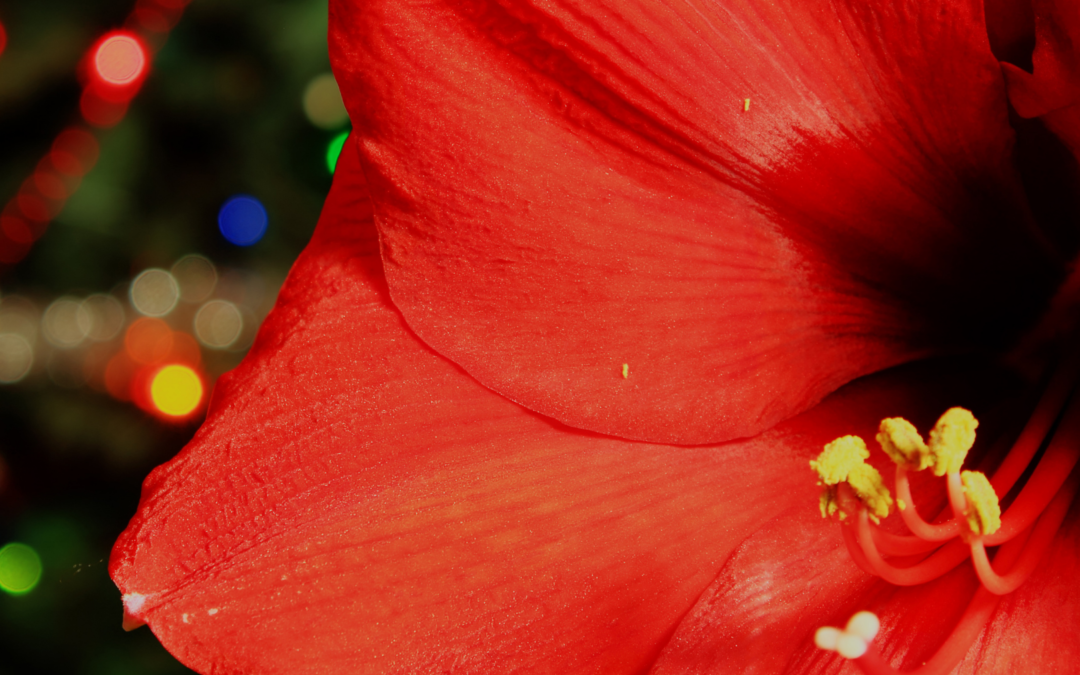
by Wildwood Outdoor Living | Nov 18, 2021 | Gardening 101
It is that magical time of year again for all of us plant lovers to shop Christmas cactus, poinsettias, Christmas trees, wreaths, greens, garland and more! The holiday season is taking over and we’re all in. One of everything please! Including that thing over there, whatever it is? Not sure, but it is covered in Christmas coloured wax and it seems like a good idea! Let’s do it! If a waxed amaryllis bulb has made its way into your shopping cart you will not regret it! These bulbs are one of the most popular bulbs to grow indoors during the holiday season, here’s why…
What Are Waxed Amaryllis?
With many different wax and bloom colours , the waxed amaryllis is the perfect way to enjoy large indoor blooms in the winter. By delicately dipping the amaryllis bulb in wax, moisture gets sealed into the bulb. No pot, planting or watering necessary! The base of the bulb is lifted by a wire stand holding the bulb upright for tall straight growth.
How to Grow Waxed Amaryllis
When using a large Amaryllis bulb (26-30 cm in diameter), you can expect your amaryllis to grow up to 45cm tall. Each bloom should take 4-6 weeks with 3-4 flowers per bulb. To care for your amaryllis, all you need to do is place a the bulbs upright in a well-lit, warm area, out of direct sunlight. After they have finished blooming and the bulb is depleted, simply thank the bulb for its natural beauty and discard it in the compost.
Tip: Remember to rotate your bulb so that it grows straight- like all plants your Amaryllis will grow towards sunlight.
Holiday Decor
For an added holiday look, try placing amaryllis in a vase, nestled in with pinecones and berries or potpourri. Amaryllis make perfect centerpieces or focal point features in all areas of your home. Waxed amaryllis bulbs are even great for kids to enjoy decorating with glitter and sequins. To learn more about waxed amaryllis, check out the Get Up and Grow segment below where Gord teaches Jasmine how to grow her very own.
Sign up
here for more blogs dedicated to better gardening
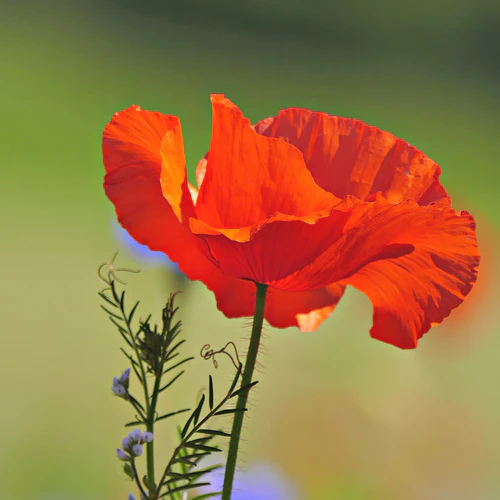
by Wildwood Outdoor Living | Nov 16, 2021 | Gardening 101
Belonging to the Papaveraceae family, the poppy can be found in many shades of white, purple and red. However, when the red poppy comes to mind we often reflect on those we have lost to war. It is a symbol of consolation, remembrance and death. Placed upon our heroes tombstones for an eternal rest in peace.
Grew From Rubble
The Word War I battlefields from Southern Belgium to Northern France were torn- explosions shook the earth, eroding soil and lifting wild poppy seeds to the surface. Buildings filled with lime crumbling to the ground, combed with nitrogen from explosives created ideal growing conditions for fields of poppies. We remember this battlefield as Flanders Fields, where the poppies blow.
Inspired by a poem
In 1915, after losing a fellow soldier, Medical Officer John McCrae penned a poem only 13 lines long on a piece of scrap paper. This poem was published in a magazine that same year. For over 100 years now “In Flanders Fields” has been imprinted in our hearts. Each year recited and shared for generations to remember and reflect on the lives sacrificed for us to live in peace.
In Flanders fields the poppies blow
Between the crosses, row on row,
That mark our place; and in the sky
The larks, still bravely singing, fly
Scarce heard amid the guns below.
We are the Dead. Short days ago
We lived, felt dawn, saw sunset glow,
Loved and were loved, and now we lie
In Flanders fields.
Take up our quarrel with the foe:
To you from failing hands we throw
The torch; be yours to hold it high.
If ye break faith with us who die
We shall not sleep, though poppies grow
In Flanders fields.
Lieutenant-Colonel John McCrae
~ May 3, 1915
The Royal Canadian Legion
Legion.ca
Before WWI
The poppy has been used since ancient times for it’s medical properties. Poppies contain small amounts of morphine and codeine. The poppy was given to patients by doctors to help relieve pain.
Symbolism
Given the symbol of sleep, peace and death: the meaning of death represented by the blood red color of the poppies petals. Sleep, represented by the opium (poppy tears) extracted as a sedative from poppy seeds. And peace, for external rest when placed on the tombstone of those lost.
When Worn
We wear the poppy to honor our veterans and to show our pride. ‘”The Lapel Poppy” should be worn from the last Friday in October until November 11th for Remembrance Day. It is also encouraged to be worn at the funerals, memorials and anniversaries of veterans. To wear your poppy, respectfully place your poppy on your left lapel over your heart, unobstructed. When removing your poppy, it should be stored or discarded respectfully. It is tradition to place your poppy on a wreath following Remembrance Day services.
Helping Veterans
Each year in Canada you can purchase your “Lapel Poppy” from cadets outside most public shopping areas or inside most stores. The donation given to purchase your poppy is collected by the Royal Canadian Legion. Members of the Legion use these donations to help veterans with expenses for medical equipment, research, home visits, long term care and more.
Memorial Flowers
Over time flowers have been used to represent significant moments in history. Below Gord shares with Jasmine two historical flowers created to represent moments in history for Canada. Watch below to learn the meaning behind the Canadian Liberator and the Canadian Celebration Tulips, and how you can plant your very own memorial garden.
Sign up
here for more blogs dedicated to better gardening
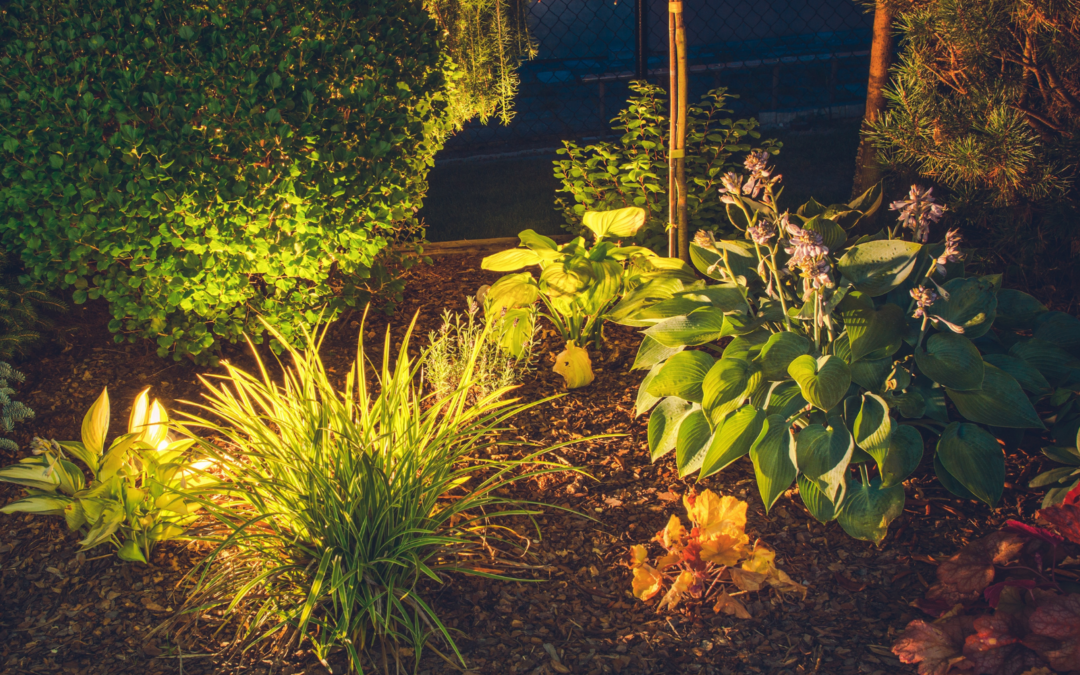
by Wildwood Outdoor Living | Nov 5, 2021 | Gardening 101
Tis the season! To climb around the garage looking for the box marked “x-mas”, pulling it out and taking a big deep breath in. Untangle the string lights, test the bulbs, replace the bulbs, test the bulbs again, map out your route and set up that ladder! If this doesn’t sound like fun to you, step off that ladder and follow us, we’ve got a better option to lighting up your home this season and all year round.
Landscape Lighting
Instead of using holiday lighting try landscape lighting. Landscape lighting will compliment your home all year long and it only requires a one time setup. Depending on your bulb choice, you can get around 50,000 hours of light and when set up on a timer, even longer! And when you want to join the festivities, it’s as easy as switching out a few light bulbs.
Inspiring Lighting
There are many places you can add lighting to your outdoor space. Sometimes all we need is a little inspiration to open up our imagination. Below are a few inspirational photos to help you think of your home in a ‘new light’.

The Garden – Gardens lights are great for entertaining in the backyard and for creating a landscape view from inside your home at night. When placing landscape lighting in your garden not only are you able to experience your garden for longer hours of the day but you’re also going to create pops of colour that aren’t visible in the sunlight. As seen above, up lighting is a technique used to create vibrant colors by placing a light underneath your plant’s foliage. This looks especially beautiful with deciduous plants that glow vibrant reds, greens and yellows.

The Front Yard – Lighting at the front of your home is a great way to increase security, provide lighting for guests and highlighting accent trees. As mentioned earlier in this article, front yard landscape lighting is also a great way to save time and energy during the holidays. After a one time installation, you can get creative by changing lights to reflect holiday colours or spotlight holiday décor like wreaths or reindeer to put them on display.

The Pond – If you’re lucky enough to have a pond, pond lights are a must. They’re a safe, non-invasive method to highlighting a water feature that could save humans and wildlife from falling in in the dark. Pond lighting is a great choice for keeping an eye on sneaky critters who steal fish and the lights create a calm rippling effect with a beautiful reflection.

Walkway/Backyard – Placing your lights along a walkway is a safe way to keep an eye on all traffic, coming and going. It’s great for your guests to safely find their way. There are several methods to placing your walkway lights, but we really enjoy up lighting on trees. Placing your lights from the bark upwards will create a more visible walkway, with a view. From a distance, your trees will create additional accent lighting to better compliment your home and landscape.
What You Need
If you’re interested in creating a night display of your own there are a few items you will need to get the job done. First you should determined what your landscaping objective is and then you will need to decide how much effort you’re willing to put in. Solar lights are a great option for the easiest method. However, there likely isn’t enough natural sunlight available to power these lights in dark spaces (like under your plants). If you’re interested in creating a more grand and customized look, you will need to purchase lighting fixtures, stands/stakes, a transformer, LED bulbs and timer. If you choose to create your own display with individually purchased products, be sure to purchase waterproof products and speak to an expert.
Kits
The most affordable and easy option for landscape lighting are outdoor lighting kits. They are affordable, easy and customizable. Outdoor lighting kits include everything you need in order to create the outdoor atmosphere of your dreams. The kit we carry captures everything you need to get started on pond and garden lighting. 
Garden and Pond LED spotlight kit by Aquascapes.
Ask Gord
Whether you’re new to outdoor landscape lighting or you’re an expert, there are always ways to change your displays. Creating something new and exciting each and every time. Need more inspiration? Check out what our President Gord has to say below about adding lighting to your pots, plants and trees.
Sign up
here for more blogs dedicated to better gardening
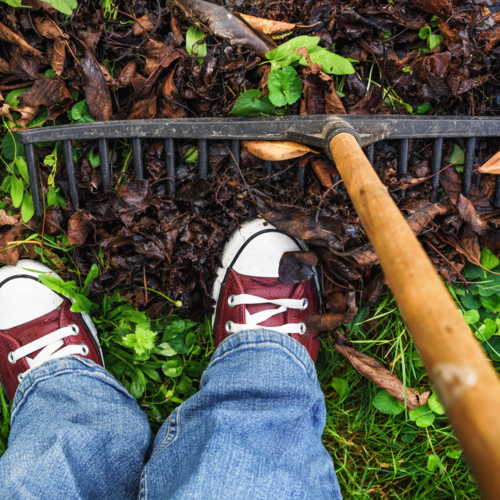
by Wildwood Outdoor Living | Nov 1, 2021 | Gardening 101
Depending on where you live, you might be faced with drastic seasonal changes. One day it could be a beautiful fall day and the next you could be buried under what feels like a hundred feet of snow! That’s why it’s always a good idea to get a good head start on your outdoor to-do list! Not only will you feel great getting things done ahead of time, but your spring self will thank you for turning a messy task into an exciting fresh start on a clean canvas!
October Checklist
Before looking at what needs to be done in November, let’s make sure we’re caught up with our October to-do’s. Here is a quick checklist for you to make sure that your garden is ready to take on November.
 |
Remove pond netting and clean the bottom of the pond after the leaves have fallen. |
 |
Prune out all dead, diseased, and dying branches and leaves off shrubs and trees. |
 |
The best selection of fall bulbs is available now. Be sure to plan out your garden ahead of your visit to make sure you have the right growing conditions for your bulb choices. |
 |
Lower the blade on your lawn mower to keep grass cut shorter for fall. Keeping your lawn shorter in fall will prevent fungus like snow mold from forming in the spring. |
 |
Start taking fuchsias and geranium cuttings. This will allow your plants to become dormant during the winter, saving their energy for Spring. |
 |
Apply dolomite lime to prevent the soil from becoming too acid over the winter months. If the PH level is too high, your grass won’t be able to absorb nutrients properly. |
 |
Begin storing onions, carrots and beets in dry peat moss or “Beats Peat” to absorb excess moisture and keep them well insulated. This will also prevent small rodents like mice from getting to them. |
 |
Plant fall bulbs and fall perennials now, for beautiful spring blooms! |
 |
Use gypsum lime and organic compost in heavy clay areas to change into workable soil. |
 |
Apply Fall & Winter lawn fertilizer 6-10-20. For the best results, be sure to apply your fertilizer earlier in the month, between October 1st-15th. |
November Checklist
No two gardens are alike. Which means you’re welcome to pick and choose what applies to you when it comes to transitioning your garden from fall to winter. We know that November isn’t the most exciting month for Gardeners because It’s a lot of prepping, storing, and tidying up. But, if you’re like us and don’t like wasting time when the weather is nice. It’s the perfect opportunity to give you a head start when spring comes. Here’s how we plan on getting a good start to our spring gardens.
 |
Divide overgrown perennials and replant. No room? They make a good Christmas present in a pot for a gardening friend (make sure to tag them). |
 |
If you run your pond pump during the winter, raise it on to a ledge in the pond to recirculate only the top layer of water. |
 |
Start paper whites and other indoor forcing bulbs for Christmas color. They need approximately seven weeks to bloom. |
 |
Plant evergreens, perennials, containerized fruit & shade trees. |
 |
All your bulbs should be dusted with sulfur or bulb dust prior to storing them away. |
 |
Prune back Rose of Sharon and P.G. hydrangeas. Tidy up perennials. |
 |
Construct a comport bin and create your own organic rich soil with garden refuse and leaves. Use Rot-it to quicken the process. |
 |
There’s still time to apply dolomite lime to your lawn. |
 |
Tie up cypress and globe cedar trees so heavy snows will not destroy their shape. |
Once you’re finished outside, bring your gardening indoors! A great way to garden indoors is by sowing seeds to create your very own starters. November is also a great time to get indoor plants on sale, as they can’t be shipped during cold months. Herb gardens are a key staple in many homes during the winter months and produce herbs quickly. Or, as Gord suggest below you could try forcing indoor bulbs to for beautiful indoor color during cold, gloomy months.
Sign up
here for more blogs dedicated to better gardening
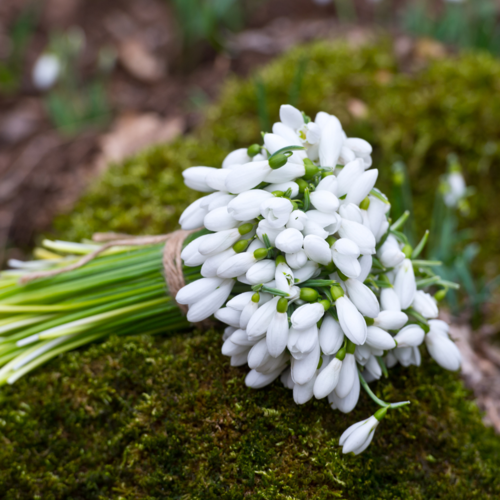
by Wildwood Outdoor Living | Oct 22, 2021 | Gardening 101
The Snowdrop, also known as Galanthus is a flower with purpose and tradition. With over 20 varieties the Snowdrop belongs to the Amaryllidaceae family. Popular in many folklore tales, the Snowdrop was believed to be from Britain but was later discovered as originating from all over Europe and the Middle East. This perennial fall bulb (spring flowering) is famous for being the first flower to make an appearance after winter. Eager to grow, it often pushes it’s way through snow sending it’s onlookers a sigh of relief that spring is on its way.
Folklore
” At the beginning of time, Snow searched for a color to borrow. The elements admired flowers and their colors. When Snow asked and pleaded for one of the colors of the flowers, the flowers turned way denying Snow a color; they felt Snow was too cold and unpleasant. The snowdrop however felt sorry for Snow and offered it its color. Snow accepted the gift and became white from that point on. To show its gratitude, Snow allowed snowdrops to bloom at the end of winter with Snow’s protection against snow and ice. Snow and snowdrops exist side-by-side as friends.” – Floraqueen.com
Symbolism
The Snowdrop is a symbol of purity, innocence and hope. As the first sign of spring, hope is brought to mind for those longing for warmer and brighter days. While it’s white blossoms symbolize innocence and purity. When presenting a Snowdrop as a gift, it is said to represent rebirth and the strength to overcome challenges.
Varieties of Snowdrops
Each variety of Snowdrop is very similar to the other with minor differences making them all unique in their individual way. All elegant and dainty, you can find variations of Snowdrops that are tall or small, single petals or double petals. Some with green accents and some without. Here are a few types of Snowdrops that you can find online at Wildwood.Express.

Snowdrop Mount Everest A tall variety of Snowdrop. Growing up to 8 inches high with a large white flower.

Snowdrop woronowii (Ikariae) The tallest of Snowdrops, with a mature height of up to 10″ tall.

Snowdrops Galanthus Elwesii The Galantus Elwesii grows only 4″ tall and is the most common variety of Snowdrop. The perfect variety naturalizing.

Snowdrop Double Flore Pleno Growing 4″ tall, the Double Flore Pleno Snowdrop is a fluffy double Snowdrop, also known as Perce De Neiges.
Growing Snowdrops
Subtilty fragrant, Snowdrops are a perennial fall bulb (spring flowering bulb) that can grow in many types of soil. They’re a low maintenance plant that only require a cool or moderately cool winter for them to bloom. The Snowdrop is toxic to humans and pets, and should be planted where they will not be accidentally ingested. However, this also makes them resistant to deer, squirrels, chipmunks and more. To plant your Snowdrops this season, follow the quick and easy steps below.
1.) Plant your Snowdrops before the ground freezes in your zone, sometime between September and December. Choose a full sun to partial sun location.
2.) Loosen your soil and add your compost of choice.
3.) Add 5-10-10 granular fertilizer and mix soil until well blended.
4.) Place your Snowdrops with the pointy side up, 3 inches deep and 4 inches apart. When in doubt, you can always place them on their side!
Inspiring Snowdrops
As you can see below, the Snowdrop is a great choice for mass naturalizing. Giving your landscapes fairytale character and interest. Over time, the Snowdrop will spread naturally, creating beautiful large drifts of gorgeous white blossoms.




Sign up
here for more blogs dedicated to better gardening
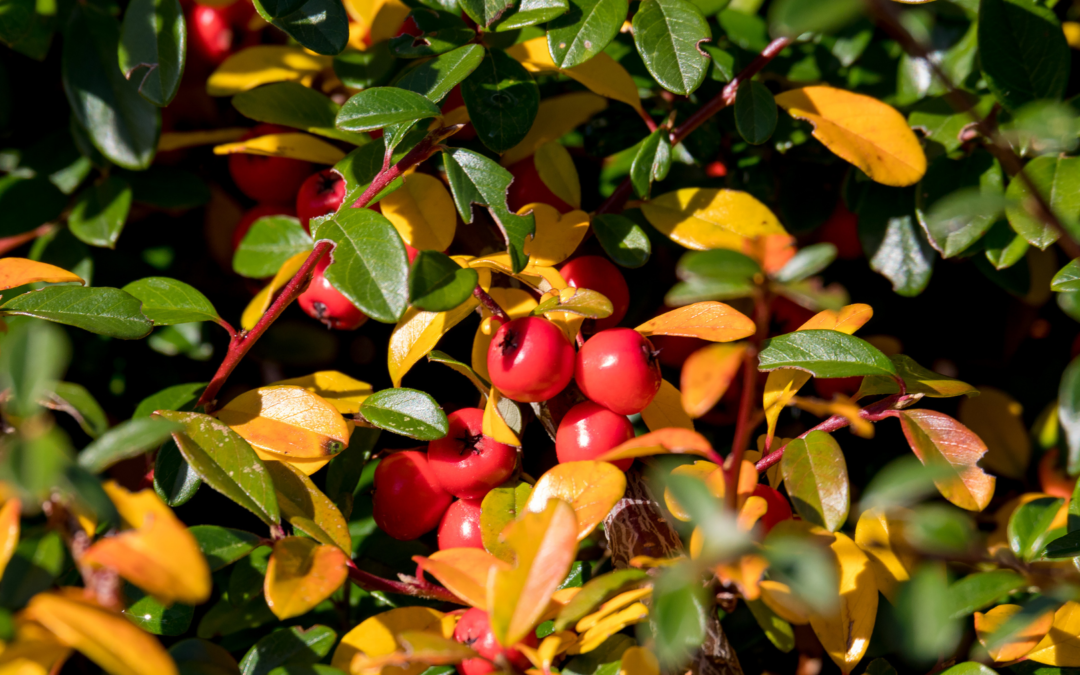
by Wildwood Outdoor Living | Oct 12, 2021 | Gardening 101
What’s A Shrub?
Is it a tree? Is it a bush? No, it’s shrub! Shrubs are like the middle sibling to trees and bushes. Unlike trees, shrubs are much smaller. They grow a central base with many small and woody branches stemming from the bottom to the top. Yet, shrubs are still slightly bigger than a bush with much less branches and more shape. Shrubs come in many different colors, shapes and sizes. Some with berries, some with flowers and some with both. They build beautiful landscapes, create privacy and help us breathe. Shrubs also provide food for the bees, the birds and sometimes, even us humans.
Why Fall?
If you have tried planting a shrub in the summer you know that it takes up a lot of time and energy caring for them. Summertime plantings are very stressful on all plants as it’s too hot and too dry. If you’re not outside watering your shrub with gallons of water every day, it will start to struggle and this is when you’ll notice your shrub leaves starting to fall off or it might just become droopy and sad looking.
If you’re looking to plant shrubs, fall is the best time to do so. The warm soil and crisp cool air that fall brings, promotes root growth for plants. An established root system is what you’ll want to keep your shrubs in place, allowing them to grow healthy and strong before the ground freezes. Here are a few unique shrubs to inspire you while it’s still the perfect time to plant them.

Snowberry – Native to North America, this shrub belongs to the honeysuckle family and is often left alone by the browsing deer. The Snowberry is known for it’s gorgeous pink, white, purple or red berries. Growing 1-6 ft tall and wide. Snowberry prefer full sun to partial shade with a minimum of 4 hours of indirect sunlight. If you live in zones 3-7, with dry or poor soil, the Snowberry is a great option for you as they can tolerate poor soil conditions.

Pussy Willow (Salix caprea) – Native to North America, the pussy willow is also know as goat willow. Historically used for its anti-inflammatory properties- it has been used by herbalists to treat joint and muscle pain, fever, headache and more! Pussy willows grow in zones 4-8, in full to partial shade with a minimum of 4 hours of direct sunlight each day. You can expect this large shrub to grow 15-25′ tall and 12-25′ wide. Making this a great shrub choice for anyone looking to build privacy.

Hydrangea – With over 75 different species the Hydrangea is native to both Asian and America. Depending on the variety you choose, Hydrangeas can blossom in the spring, summer or fall with large scented or unscented flowers. In zones 3-7, this shrub loves morning sun but not afternoon sun. Plant your Hydrangea in well drained soil, facing north or south. Hydrangeas are famous for their beautiful color variations, making them a popular shrub choice for those looking to add some some color to their landscape.

Viburnum – Belonging to the Adoxaceae family. Viburnums can grow anywhere between 2-30ft are there are both evergreen and deciduous varieties. They have clusters of blooms at the end of each branch, ranging from sweet to unpleasantly scented depending on the type. Grown in zones 2-9, Viburnums prefer moist and well-drained soil with plenty of sunlight. These shrubs provide both berries and flowers which are great for attracting the birds and bees! If you are looking to attract more wildlife to your garden- a viburnum will do the trick.

Pyracantha – A very thorny evergreen shrub that is native to Europe and Asian is not on the deer menu. This perennial shrub can grow up to 12 ft tall and wide which makes a great privacy screen. Pyracantha have fragrant white blossoms in late spring with long lasting orange, red or yellow berries thereafter depending on the type you choose. A tasty treat for the birds, the bees and the butterflies. The berries on Pyracantha can last through winter giving you a much needed burst of colour. This shrub is a fan favorite for gardeners looking to get a fresh summer feel all year round.

American Elderberry – Native to Europe and America, the Elderberry is one of the easiest shrubs to grow. With many variations, you can grow this shrub in wide variety of growing conditions and zones. The American Elderberry can grow up to 12 ft tall and 6 feet wide. In zones 3-9, this shrub prefers full sun to partial shade and almost any type of soil that is well draining. Once fully ripened in August or September, the Elderberry can be harvested for cooking or eating raw. The perfect shrub for snacking!
Don’t Forget
If you’re ready to take the next step by introducing a shrub to your yard, just be sure to read the care instructions. Each shrub comes in many different varieties, and you want to make sure the shrub you choose is the going to thrive in your growing conditions. For more shrub inspiration, check out this episode of Get Up and Grow: Shrubs and Tree’s That Add Brilliant Fall Color to Your Garden, with President of Wildwood Outdoorliving, Gord and Chek News Journalist Jasmine Bala, below. Happy Gardening!
Have a question? Let us know at info@wildwoodoutdoorliving.com.
Sign up here for more blogs dedicated to better gardening



























